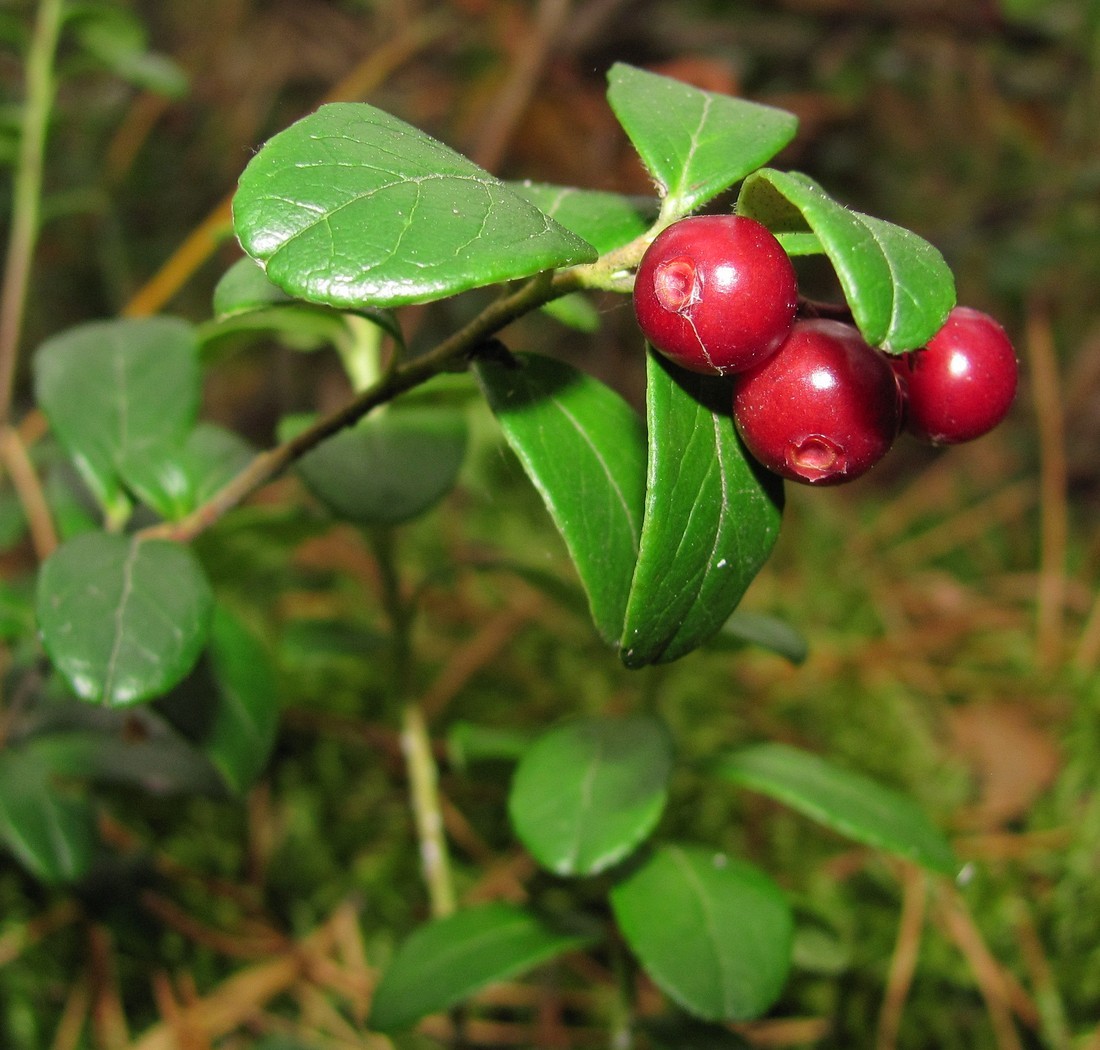OPTIMIZATION OF THE METHOD OF ULTRASONIC EXTRACTION OF BIOLOGICALLY ACTIVE COMPOUNDS WITH AN ALCOHOL-WATER MIXTURE FROM THE FRUITS OF VACCINIUM VITIS-IDAEA L., GROWING ON THE KOLA PENINSULA
UDK 66.061.34
Abstract
Lingonberry (Vaccinium vitis-idaea L.) is a profusely fruiting evergreen berry shrub, which is a hypoactic forest species, growing throughout the Kola Peninsula. Fruits have a number of significant therapeutic properties, such as antioxidant, antitumor, neuroprotective, decongestant, antibiotic, due to a significant content of phenolic compounds. The process of complete extraction of polyphenolic components from a complex plant matrix requires the development of extraction conditions aimed at maximum mass transfer of target components with minimal destruction of compounds. In connection with the prospects of using the fruits of lingonberry plants in the pharmaceutical and cosmetology industries, in this work, for the first time, optimization of the conditions of the method of ultrasonic extraction with a water-ethanol mixture using single-factor analysis and the Box-Benken algorithm was carried out. The kinetics of the extraction process is approximated by the second-order reaction equation. The optimal duration of extraction, the concentration of the extractant, the power of ultrasonic exposure, the diameter of the fractions of plant raw materials, the hydromodule and the extraction temperature were determined. The total content of polyphenols and antioxidant activity, as well as the degree of inhibition of free radicals, were determined. The results obtained can be used in the development of technologies for the production of components for use in the pharmaceutical and cosmetology industries.
Downloads
Metrics
References
Ramenskaya M.L. Analiz flory Murmanskoy oblasti i Karelii. [Analysis of the flora of the Murmansk region and Kare-lia]. Leningrad, 1983, 216 p. (in Russ.).
Kowalska K. International Journal of Molecular Sciencesб 2021, vol. 22, no. 10, article 5126. DOI: 10.3390/ijms22105126
Vilkickyte G., Petrikaite V., Pukalskas A., Sipailiene A., Raudone L. Journal of Ethnopharmacology, 2022, vol. 292, article 115207. DOI: 10.1016/j.jep.2022.115207.
Vilkickyte G., Petrikaite V., Marksa M., Ivanauskas L., Jakstas V., Raudone L. Antioxidants, 2023, vol. 12, no. 2, arti-cle 465. DOI: 10.3390/antiox12020465.
Grace M.H., Esposito D., Dunlap K.L., Lila M.A. Journal of agricultural and food chemistry, 2014, vol. 62, no. 18, pp. 4007–4017. DOI: 10.1021/jf403810y.
Szakiel A., Pączkowski C., Koivuniemi H., Huttunen S. Journal of Agricultural and Food Chemistry, 2012, vol. 60, no. 19, pp. 4994–5002. DOI: 10.1021/jf300375b.
Dróżdż P., Šėžienė V., Wójcik J., Pyrzyńska K. Molecules, 2017, vol. 23, no. 1, article 53. DOI: 10.3390/molecules23010053
Dincheva I., Badjakov I. International Journal of Medicine and Pharmaceutical Science, 2016, vol. 6, no. 3, pp. 39–50.
Bujor O-C., Ginies C., Popa V. I., Dufour C. Food chemistry, 2018, vol. 252, pp. 356–365. DOI: 10.1016/j.foodchem.2018.01.052.
Makarova N.V., Yeremeyeva N.B. Khimiya Rastitel'nogo Syr'ya, 2020, no. 1, pp. 167–177. DOI: 10.14258/jcprm.2020014425. (in Russ.).
Matveeva V.I., Ruchkina A.G., Kobrakov K.I., Shpigun L.K., Shmakova N.S. Khimiya Rastitel'nogo Syr'ya, 2022, no. 2, pp. 105–112. DOI: 10.14258/jcprm.20220210516. (in Russ.).
Vrancheva R., Ivanov I., Badjakov I., Dincheva I., Georgiev V., Pavlov A. Food Science and Applied Biotechnology, 2020, vol. 3, no. 2, pp. 149–156. DOI: 10.30721/fsab2020.v3.i2.98.
Zhu Y., Yu J., Jiao C., Tong J., Zhang L., Chang Y., Sun W., Jin Q., Cai Y. Heliyon, 2019, vol. 5, no. 9. DOI: 10.1016/j.heliyon.2019.e02374.
Bitwell C., Indra S.S., Luke C., Kakoma M.K. Scientific African, 2023, vol. 19, no. 5, article e01585. DOI: 10.1016/j.sciaf.2023.e01585.
Beydeman I.N. Metodika fenologicheskikh nablyudeniy pri geobotanicheskikh issledovaniyakh. [Methodology for phe-nological observations in geobotanical research]. Moscow, Leningrad, 1954, 130 p. (in Russ.).
Meier U., Bleiholder H., Buhr L., Feller C., Hacks H., Hess M., Lancashire P.D., Schnock U., Stauss R., van den Boom T., Weber E., Zwerger P. Journal für Kulturpflanzen, 2009, vol. 61, pp. 41–52. DOI: 10.5073/JfK.2009.02.01.
Meier U. Growth stages of mono- and dicotyledonous plants BBCH. Quedlinburg, 2018, 204 p. DOI: 10.5073/20180906-074619.
Gosudarstvennaya farmakopeya Rossiyskoy Federatsii, XIV izd. [State Pharmacopoeia of the Russian Federation, XIV ed.]. Moscow, 2018, vol. 1, pp. 272–275. (in Russ.).
Tungmunnithum D., Garros L., Drouet S., Renouard S., Lainé E., Hano C. Plants, 2019, vol. 8, no. 3, article 50. DOI: 10.3390/plants8030050.
Cavdarova M., Makris D.P. Waste and Biomass Valorization, 2014, vol. 5, pp. 773–779. DOI: 10.1007/s12649-014-9298-3.
Tsvetov N., Sereda L., Korovkina A., Artemkina N., Kozerozhets I., Samarov A. Biomass Conversion and Biorefinery, 2022, vol. 12, pp. 145–156. DOI: 10.1007/s13399-022-02299-2.

Copyright (c) 2024 chemistry of plant raw material

This work is licensed under a Creative Commons Attribution 4.0 International License.

This work is licensed under a Creative Commons Attribution 4.0 International License.
The authors, which are published in this journal, agree to the following conditions:
1. Authors retain the copyright to the work and transfer to the journal the right of the first publication along with the work, at the same time licensing it under the terms of the Creative Commons Attribution License, which allows others to distribute this work with the obligatory indication of the authorship of this work and a link to the original publication in this journal .
2. The authors retain the right to enter into separate, additional contractual agreements for the non-exclusive distribution of the version of the work published by this journal (for example, to place it in the university depository or to publish it in a book), with reference to the original publication in this journal.
3. Authors are allowed to post their work on the Internet (for example, in a university repository or on their personal website) before and during the review process of this journal, as this may lead to a productive discussion, as well as more links to this published work.











